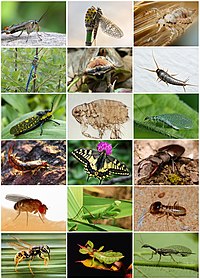
Flower preferences and pollen transport networks for cavity‐nesting solitary bees: Implications for the design of agri‐environment schemes
Sign Up to like & getrecommendations! Published in 2018 at "Ecology and Evolution"
DOI: 10.1002/ece3.4234
Abstract: Abstract Floral foraging resources are valuable for pollinator conservation on farmland, and their provision is encouraged by agri‐environment schemes in many countries. Across Europe, wildflower seed mixtures are widely sown on farmland to encourage pollinators,… read more here.
Keywords: solitary bees; transport networks; environment schemes; pollen transport ... See more keywords

Bee Tracker—an open‐source machine learning‐based video analysis software for the assessment of nesting and foraging performance of cavity‐nesting solitary bees
Sign Up to like & getrecommendations! Published in 2022 at "Ecology and Evolution"
DOI: 10.1002/ece3.8575
Abstract: Abstract The foraging and nesting performance of bees can provide important information on bee health and is of interest for risk and impact assessment of environmental stressors. While radiofrequency identification (RFID) technology is an efficient… read more here.
Keywords: software; solitary bees; cavity nesting; nesting solitary ... See more keywords

Non-target effects of agri-environmental schemes on solitary bees and fungi in the United Kingdom
Sign Up to like & getrecommendations! Published in 2022 at "Bulletin of Entomological Research"
DOI: 10.1017/s0007485322000414
Abstract: Abstract Agri-environmental schemes (AES) are used to enhance pollinator diversity on agricultural farms within the UK. Though the impacts of these schemes on archetypal pollinator species such as the bumblebee (Bombus) and honeybee (Apis) are… read more here.
Keywords: agri environmental; target effects; solitary bees; bee ... See more keywords

Phenological mismatches and the demography of solitary bees
Sign Up to like & getrecommendations! Published in 2023 at "Proceedings of the Royal Society B: Biological Sciences"
DOI: 10.1098/rspb.2022.1847
Abstract: Species respond idiosyncratically to environmental variation, which may generate phenological mismatches. We assess the consequences of such mismatches for solitary bees. During 9 years, we studied flowering phenology and nesting phenology and demography of five… read more here.
Keywords: solitary bees; phenology; mismatches demography; demography ... See more keywords

The Pharmacological Potential of Novel Melittin Variants from the Honeybee and Solitary Bees against Inflammation and Cancer
Sign Up to like & getrecommendations! Published in 2022 at "Toxins"
DOI: 10.3390/toxins14120818
Abstract: The venom of honeybees is composed of numerous peptides and proteins and has been used for decades as an anti-inflammatory and anti-cancer agent in traditional medicine. However, the bioactivity of specific biomolecular components has been… read more here.
Keywords: inflammation; solitary bees; melittin variants; variants honeybee ... See more keywords